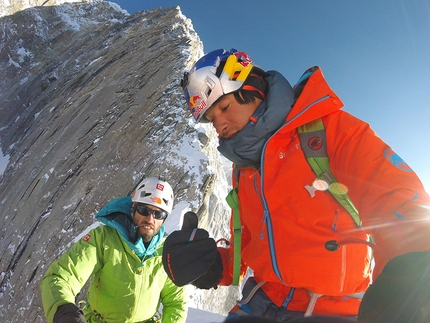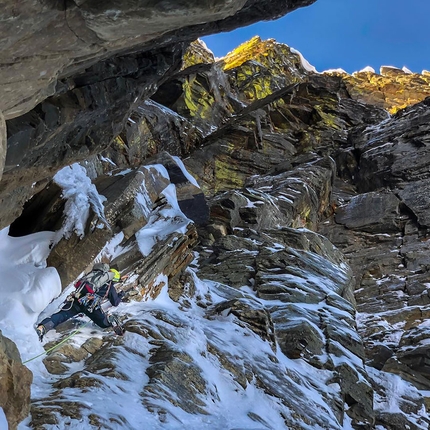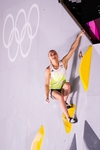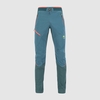David Lama, Hansjörg Auer, Jess Roskelley: farewell to three great mountaineers
Hansjörg Auer, David Lama and Jess Roskelley will never return. The trio were swept away by avalanche on Howse Peak, a difficult and remote mountain in the Canadian Rockies, last week. Initially they were reported as "missing". Then, inevitably, hopes faded. It’s difficult to think of something more devastating and definitive and, at the same time, more undefined. "Missing" is a term that veils endless questions. Almost as many as those "why" and those "how" that, when put in a mountaineering context, are destined to remain unanswered. This is precisely the reason why one must let time take its course. And this is also why it's useless to try to comprehend. Perhaps because there really is nothing to understand. All you can do is try to catch your breath. Try and be "detached" from a story that repeats itself, that has already been witnessed before. You try to tell yourself - once again - that this, too, is a part of mountaineering. Indeed, the lifeblood of mountaineers, and that nothing can be done about it. Yet these deaths, this tragedy, has something that goes beyond. There’s something about this drama that leaves you stunned. Almost lost. Not just because the Austrians David Lama and Hansjörg Auer were true legends of modern mountaineering. While Jess Roskelley - whose father John is one of America’s most famous mountaineers - was one of the most talented US alpinists. The truth is that with the unexpected deaths of this world-class trio, this tragedy risks being almost unbearable. The only way to numb the pain is by trying to recount, and to remember, who these three young men were. Recall their hopes. Relive their dreams. And their passions, too. Because at the end of the day, perhaps this is where their roots lie, what formed the essence of their lives.
David Lama, 28, son of a Nepali mountain guide and a nurse from Austria, was born to climb. Or perhaps it would be more correct to say, he was predestined to savour the adventure of climbing. Those who saw him, some twenty years ago, climbing up the smooth limestone rock faces at Arco had no doubts whatsoever: that tiny youngster was an enfant prodige. Of few words but many facts, he adeptly transferred his outdoor climbing skills to the indoors and immediately left his mark in climbing competitions. In 2006, aged a mere 16, he was crowned European Lead Champion while the following year he doubled this up by winning the European Bouldering Championship. In doing so he demonstrated his indisputable class, both with and without a rope, and confirmed this excellence in 2008 by winning the Combined World Cup which, as the name suggests, merges the results of all three climbing disciplines. Unsurprisingly, he was awarded with the 2007 La Sportiva Competition Award at the Arco Rock Legends, widely referred to as the sports climbing Oscars. Lama obviously stood out at the crags, too, making a name for himself in 2000 when, aged 10, he climbing his first 8a. At the time he was the youngest ever to achieve such a feat. He upped the ante in 2004 by redpointing 8c aged just 14, by onsighting 8b+ in 2006 and then climbing 9a in 2015. This is the side of Lama the sport climber. 2008 however marked a pivotal moment, perhaps unexpected for many: together with Jorg Verhoeven he made the first ascent of Desperation of the Northface, a 820m high climb with 7b difficulties up Sagwand (3227m) in the Zillertal Alps, Austria. At the time Lama was still a competition climber, yet with this new route he started to broaden his horizons… He subsequently formed part of an Austrian dream team of climbers that travelled to the Cochamo Valley in Chile, and hung out on the big walls in Yosemite Valley. Then, in 2009, he went on his first trip to Patagonia with the pre-stated goal of making the first free ascent of Cesare Maestri's Compressor route on Cerro Torre. The news came as a bombshell. Many viewed this as an almost a "brash" undertaking. It could be argued that for Lama this adventure was a little premature, since it ended almost as soon as it had begun: with no summit, no free ascent and a barrage of controversy surrounding bolts placed by his support team. Many alpinists did not forgive him and while this wound left its mark on David, at the same time it helped him grow. At this point he seemed to have chosen his path: big walls and big mountains. So in 2010 he joined forces with Verhoeven once again and established Brento Centro up huge Cima Brenta above Valle del Sarca in Italy, before making a fast repeat of Bellavista, Alexander Huber’s masterpiece on Cima Ovest in the Tre Cime Lavaredo group of the Dolomites. 2011 proved pivotal once again. David seemed restless. Or, better still, he seemed to have finally found his true vocation: adventure and alpinism. With Peter Ortner he repeated Pacienca (8a) up the North Face of the Eiger. He traveled to Kashmir (India) with Stephan Siegrist and Denis Burdet to establish Yoniverse, a new route up Cerro Kishtwar. Then he repeated two big multi-pitches up the smooth Sonnwand in Austria, Stoamanndl and Donnervogel, both 8b and both first ascended by Alexander Huber. At the time Lama was just 21 years old. In many ways he had only just taken up mountaineering, but he was already one of the best. Then he struck gold: on 22 January 2012 David Lama completed the first free ascent of the Compressor route on Cerro Torre in Patagonia. As the timing of his free ascent coincided with the hotly debated bolt chopping by Americans Jason Kruk and Hayden Kennedy, many failed to comprehend the magnitude of Lama’s achievement. Yet his ascent was groundbreaking, both in terms of style and audacity. And his decision to exit directly up the headwall was a masterpiece of intuition and boldness. Although Lama received a Special Mention at the Piolet d’or, as we wrote at the time, he deserved far more. In any case he remained unperturbed and the impression one got was that nothing had changed since he was a youngster: what counted for Lama was for him to go out climbing, pursuing "his" form of mountaineering. As a result he quickly notched up an impressive run of back-to-back new routes and solo ascents across the Alps and in the Greater Ranges. Beginning, in 2012, with a repeat of legendary Eternal Flame up the Trango Tower in the Karakorum, and ending in 2018 with his grandiose solo first ascent of Lunag Ri, a 6907m peak on the border between Nepal and Tibet he had attempted twice previously. During these years Lama often teamed up with Hansjörg Auer. In 2014, for instance, they attempted the virgin NE Face of Masherbrum, while in 2016 they attempted another awe-inspiring project, the unclimbed SE Ridge of Annapurna III (7555m). Although both expeditions failed to reach the summit, evidently Lama and Auer formed a formidable climbing partnership. There is nothing strange in this, on the contrary. And it's nice to think that two people like Lama and Auer - two world-class mountaineers - went out of their way to climb together, held each other in such regard that they shared the same projects and trusted each other with their very lives. Hansjörg Auer was indeed special. As special as his life story and his dedication to mountaineering.
April 29, 2007, a Sunday. On that day Hansjörg Auer climbed the Fish route up the South Face of Marmolada in the Dolomites. At the time he was 23 years old. And he edged his way up the legendary, difficult route all on his own and, above all, without a rope. His free solo, with no margin for error whatsoever, was almost incomprehensible on that smooth face that offers difficult, marginal climbing. The word leaked out, almost by accident, only a few days after his ascent. And the news came as a bombshell; at first few believed it was true. Auer hadn’t taken any pictures. And he hadn’t told anyone in advance, except for his brother, about his plan. Later he’d confess that he’d been absolutely focused on his personal quest, on the experience of climbing Via del Pesce solo, that nothing else interested him. But by complete coincidence another team happened to be on the mountain and they took a picture of him during his free solo. The audacity, and also the purity, of this little-known climber was - for once - justly rewarded. From one day to the next the entire mountaineering community knew about this phenomenal alpinist. And ever since that Sunday in early 2007, his daring ascent of the Fish route has been recognised as one of the greatest free solos of all time. For this young alpinist the solo could have marked the beginning of the end: withstanding the pressure of stardom, such immense, sudden popularity, is not easy. Not so for Auer. Not only did he subsequently prove his worth, he also demonstrated his genuine love for climbing and mountaineering. Year after year Auer matured as a man and also as a mountaineer. It is difficult to list all the new routes he established across the globe. It is impossible to count how many hours he spent on a wall, or traveling to some remote peak. The mountains exerted an irresistible attraction. For Auer, adventure was an essential element. And he loved to experience these moments without compromise, with a crystal clear, linear ethic. Auer was perfectly aware of what he risked. Indeed, he often talked about the risks he was taking. But he simply loved what he was doing too much to give it all up. Equally, it was also clear how much the right climbing partners meant to him. Auer, the great solitary mountaineer, savoured climbing with the right partner, and his love for the mountains was infectious. One of his greatest accomplishments, and one of his best expeditions of all, stands as testament this overwhelming drive: his 2013 ascent of the unclimbed Kunyang Chhish East in Pakistan’s Karakorum. His climbing partners on that adventure were another great mountaineer, Switzerland’s Simon Anthamatten, and his beloved brother Matthias. Yes, Auer’s love for climbing was contagious. A passion he believed was worth living for.
This most certainly held true for Jess Roskelley, the third climber of this, needless to say, tragic story. 38 years old, mountain guide, one of America’s leading mountaineers, put simply, one of the world’s best. In 2003, aged 20, he became the youngest American climber to summit Everest. He reached the top of the highest mountain in the world with his father John; one of the climbers who in the 70's and 80's shaped the history of Himalayan mountaineering, a true legend in the climbing community and, unsurprisingly, a recipient of the 2014 Piolet d’or Lifetime Achievement award. This father son relationship was absolutely unique, noteworthy, also because this was John’s fourth and final attempt at scaling Mt. Everest. Jess took to the mountains at an early age and started guiding on Mount Rainer when he was just 18. Two years later he’d already reached that cold summit 35 times with his clients. This detail speaks volumes. As do the difficult climbs that Jess repeated or established across the continents. Many were forged on remote, distant and unknown peaks in Canada and Alaska, such as the new route up Citadel in Alaska, established in 2013 with Ben Erdmann and Kristoffer Szilas, and the new route up the West Witches Tit in 2014 with John Frieh. In 2017 he endured a committing 8-day traverse along the South Ridge on Mount Huntington with Clint Helander, while in 2018 he teamed up with Kurt Ross and Nelson Neirinck to climb the virgin peaks Chhota Bhai (6321m) and Changi Tower 2 (6250m) in the Pakistani Karakorum.
Roskelley, Auer and Lama all quested for remote mountains, not necessarily famous, but all with that irresistible, mysterious and extraordinary sense of adventure. The very same adventure they searched for all together just the other day, on their unrenounceable, remote and difficult peak in Canada’s Rocky Mountains.
by Vinicio Stefanello



 1 / 66
1 / 66
 Copia link
Copia link

 archive
archive


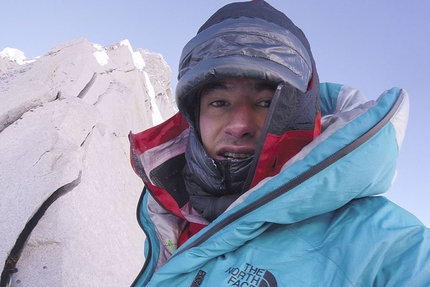



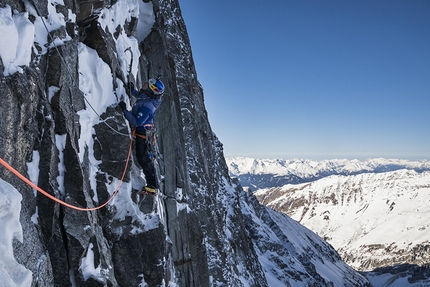


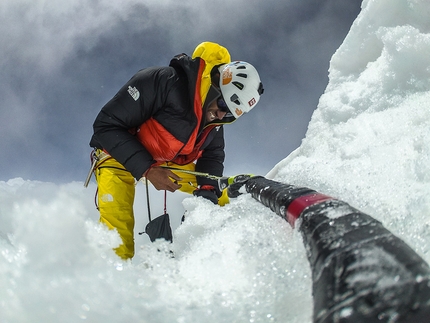






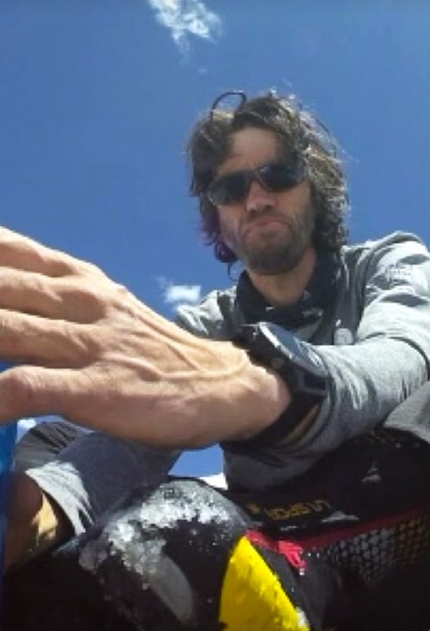
 See all photos
See all photos